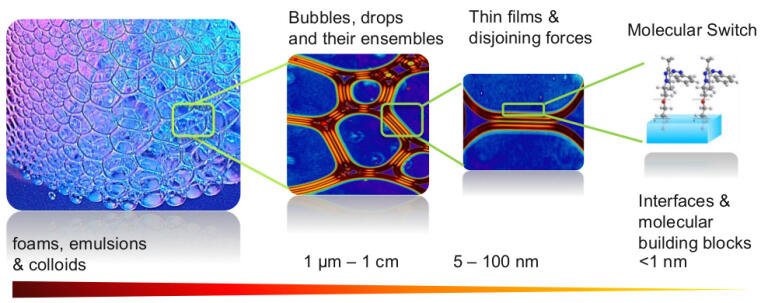Molecular Control of Soft Matter Interfaces and Materials
We study soft matter interfaces on a molecular level and use the latter to tailor properties of soft materials such as aqueous foam. For that, we use molecular self-assembly of polyelectrolytes, proteins or photo-switchable amphiphiles at aqueous interfaces and achieve molecular control of the latter. This allows us to modify properties from nano to macroscopic lengths scale through structure-property relations. For instance, foams as hierarchical materials are greatly affected by the arrangement and distribution of gas bubbles on a macroscopic scale as well as on the thickness and composition of thin-films (lamellae) on a mesoscopic scale. Although they are hidden in the bulk, liquid-gas interfaces are a building block of foams with overwhelming importance. By controlling molecular composition, conformation and intermolecular interactions of a few molecular layers at liquid-gas interfaces – that are ubiquitous in aqueous foam – we can determine materials properties throughout the entire hierarchical chain. This can be also used to achieve responsive functions e.g. changes in stability as a function of temperature or light irradiation.
Accessing buried interfaces on a molecular level is, however, particularly challenging since many techniques are not interfacial specific or cannot be applied under relevant conditions e.g. in liquids. For that reason, we are using nonlinear optical spectroscopy as a crucial part of our current research, because nonlinear light matter interactions can be used to obtain interfacial information and allow for investigations of interfaces in and far outside equilibrium conditions.


